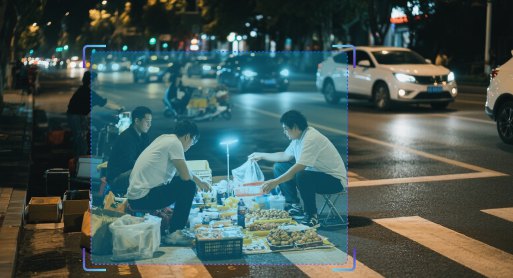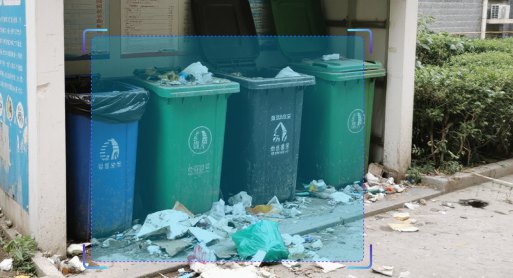
Street-Side Drying Detection

Algorithm Introduction
Utilizing AI vision algorithms to detect laundry items hung outside buildings along urban roads or streets, issuing alerts for such detections. The system can identify multiple overlapping targets or individual items, but is not applicable to indoor scenarios.
- ● Brightness requirements: Minimum bright pixel ratio (grayscale value >40) of 50% in the target area
- ● Image requirements: Optimal detection performance at 1344×1768 resolution
- ● Target size: For 1080p (1920×1080) video streams, minimum target size of 39 pixels (height) × 68 pixels (width)
Application Value
-

Urban Roadways
The algorithm monitors areas such as shop exteriors and residential building balconies, rapidly identifying laundry hanging outside. It accurately detects both single items and multiple items stacked together. -

Public Spaces
The algorithm scans building exteriors to promptly detect unauthorized drying activities, generates inspection reports, and helps maintain the city's appearance and public environment cleanliness.
FAQ
-
Algorithm AccuracyAll algorithms published on the website claim accuracies above 90 %. However, real-world performance drops can occur for the following reasons:
(1) Poor imaging quality, such as
• Strong light, backlight, nighttime, rain, snow, or fog degrading image quality
• Low resolution, motion blur, lens contamination, compression artifacts, or sensor noise
• Targets being partially or fully occluded (common in object detection, tracking, and pose estimation)
(2) The website provides two broad classes of algorithms: general-purpose and long-tail (rare scenes, uncommon object categories, or insufficient training data). Long-tail algorithms typically exhibit weaker generalization.
(3) Accuracy is not guaranteed in boundary or extreme scenarios.
-
Deployment & InferenceWe offer multiple deployment formats—Models, Applets and SDKs.
Compatibility has been verified with more than ten domestic chip vendors, including Huawei Ascend, Iluvatar, and Denglin, ensuring full support for China-made CPUs, GPUs, and NPUs to meet high-grade IT innovation requirements.
For each hardware configuration, we select and deploy a high-accuracy model whose parameter count is optimally matched to the available compute power.
-
How to Customize an AlgorithmAll algorithms showcased on the website come with ready-to-use models and corresponding application examples. If you need further optimization or customization, choose one of the following paths:
(1) Standard Customization (highest accuracy, longer lead time)
Requirements discussion → collect valid data (≥1 000 images or ≥100 video clips from your scenario) → custom algorithm development & deployment → acceptance testing
(2) Rapid Implementation (Monolith:https://monolith.sensefoundry.cn/)
Monolith provides an intuitive, web-based interface that requires no deep AI expertise. In as little as 30 minutes you can upload data, leverage smart annotation, train, and deploy a high-performance vision model end-to-end—dramatically shortening the algorithm production cycle.






